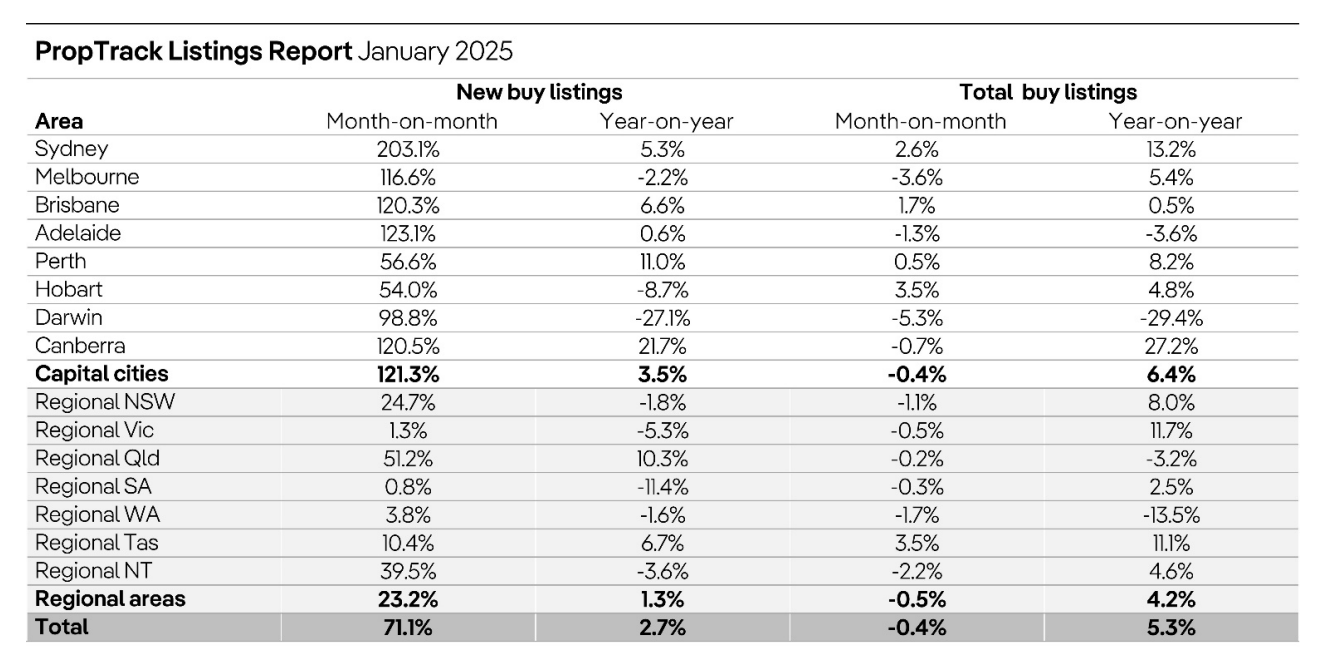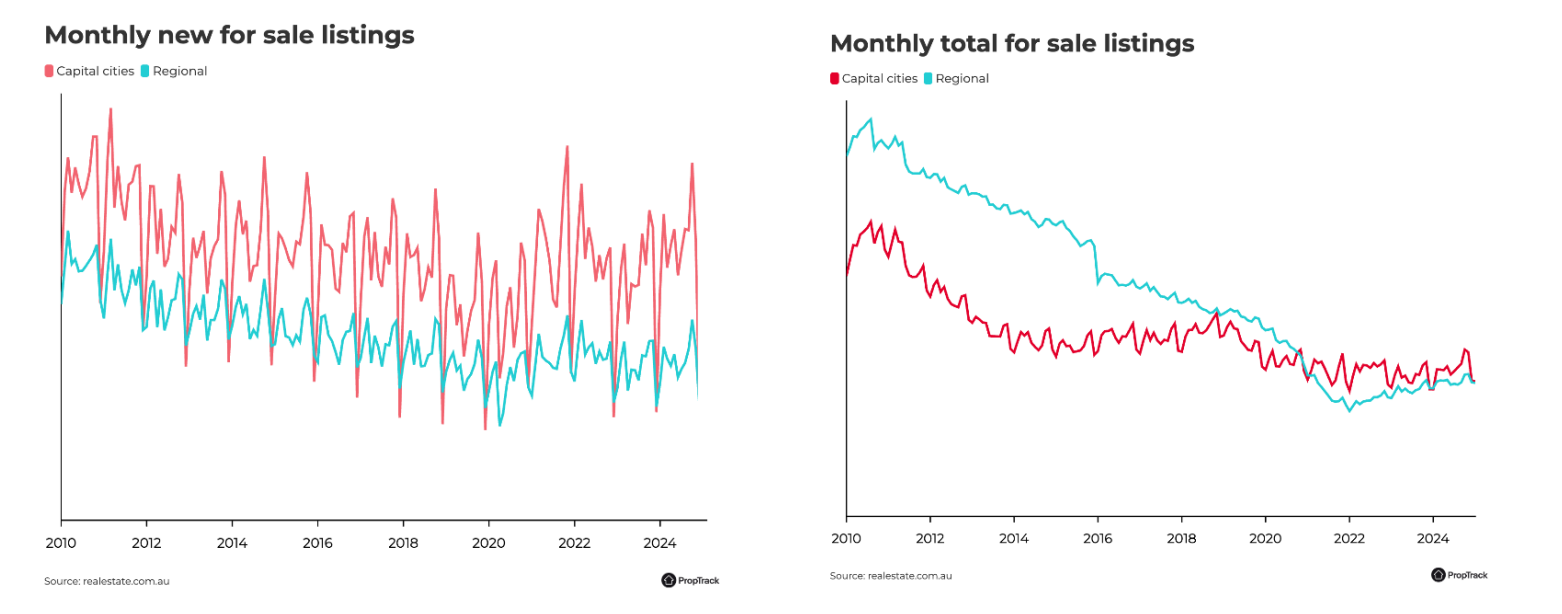

January marked a significant uptick in new property listings, achieving the highest levels for the month since 2018, with a year-on-year increase of 2.7%, according to the latest REA Group Listings Report.
This growth was even more pronounced in the combined capital cities, where new listings rose by 3.5% from the previous year, the largest January increase since 2012. Regional markets also saw an increase, albeit more modest at 1.3%.

The increase in listings reported by REA Group aligns with data from SQM Research, which indicates that new listings rose by 2.9% to 53,019 properties, an 18.1% increase from January 2024.
Following a typical decline in December, January rebounded with a record-breaking 71.1% month-on-month increase in new listings, the largest ever recorded. This spike was more significant in the capital cities, which saw an astounding 121.3% increase, compared to a 23.2% rise in regional markets.
The total volume of listings in January was 5.3% higher year-on-year, with capital cities and regional markets registering increases of 6.4% and 4.2%, respectively.
This influx has brought the total number of listings to the highest since January 2021, offering buyers more options and helping moderate house price growth.
In terms of new listings, Sydney, Adelaide, and Canberra led with the highest month-on-month increases, while Hobart, Perth, and Darwin saw the smallest rises.
Annually, Canberra, Perth, and Brisbane recorded the largest increases in new listings among the capitals, whereas Darwin, Hobart, and Melbourne experienced declines.
The total listing volumes reflected a varied landscape. Canberra, Sydney, and Perth enjoyed the most significant increases over the past year, while Darwin and Adelaide faced reductions in total listings.
In regional areas, Queensland and Tasmania saw gains in new listings, contrasting with declines in South Australia, Victoria, and the Northern Territory.
The regional markets displayed mixed results, with year-on-year increases in places like regional Victoria and Tasmania but declines in regional Queensland and Western Australia, REA Group data showed.
The strong start to the year in listing volumes, potentially influenced by anticipation of a February rate cut, has bolstered vendor confidence, translating into more listing activity. As expected, the Reserve Bank (RBA) reduced the OCR by 25 basis points to 4.1%.
Buyers are now faced with a broader range of options, which has tempered price growth but maintained strong sales volumes due to persistent demand.

